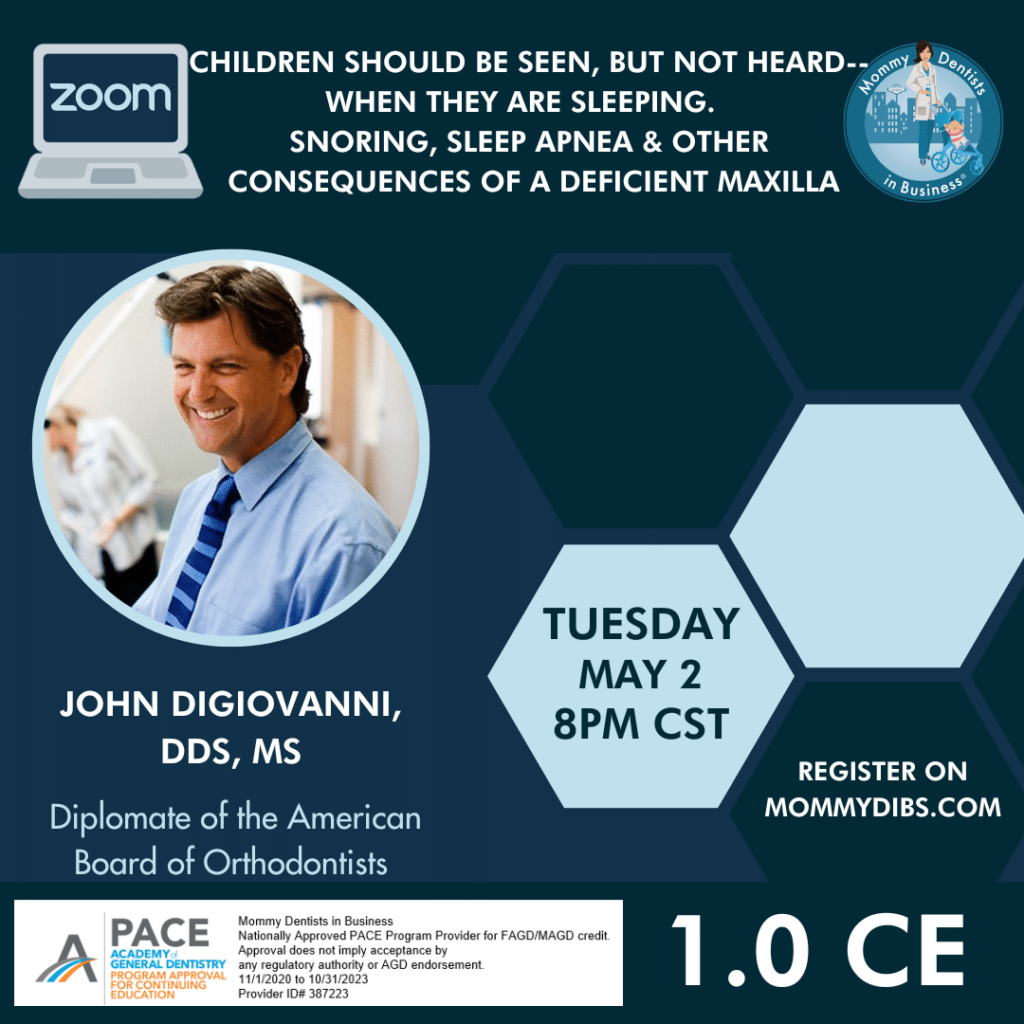Live Webinar Details
CHILDREN SHOULD BE SEEN, BUT NOT HEARD-- WHEN THEY ARE SLEEPING. SNORING, SLEEP APNEA AND OTHER CONSEQUENCES OF A DEFICIENT MAXILLA
- May 2, 2023 @ 8:00 PM CST
EARN 1.0 CE CREDITS
The abundance of maxillary anomalies manifesting as constricted, high-arched palates, cross bites, open bites, eruption anomalies and impactions suggests the existence of a “Maxillary Deficiency Syndrome”. While genetics may be the initial consideration in developing malocclusions, chronic environmental conditions, such as upper airway obstruction, mouth breathing and improper tongue posture reveal the interplay between genetics and the environment that can adversely affect development of the upper and lower jaws. Often, by the time young, growing patients present themselves for an orthodontic exam, alterations in the normal mode of respiration and other external factors may have already imposed a profound influence upon the proper development of the craniofacial process. The good news is that dentists can identify and evaluate clear signs of a developing malocclusion that can be reversed or improved. Early diagnosis and appropriate treatment are the keys to helping these patients.
Objectives:
- Define and understand the prevalence of Maxillary Deficiency Syndrome
- Identify early signs of dental problems and jaw growth abnormalities that are indicative of this condition
- Understand the consequences and repercussions of leaving these conditions untreated
- Recognize the important role of the dentist in the timely diagnosis and interdisciplinary treatment necessary to improve or reverse this condition for the patient’s dental and overall health

Special Guest(s):
Dr. John DiGiovanni
Brought To You By:

Additional Notes
- Webinar Registration Closes ONE HOUR prior to Webinar Start Time
- Payment must be received by webinar start time. No registrations will be approved after the webinar begins.
- Attendee Must be Present for 90% fo webinar running time in order to be eligible for continuing education credits




